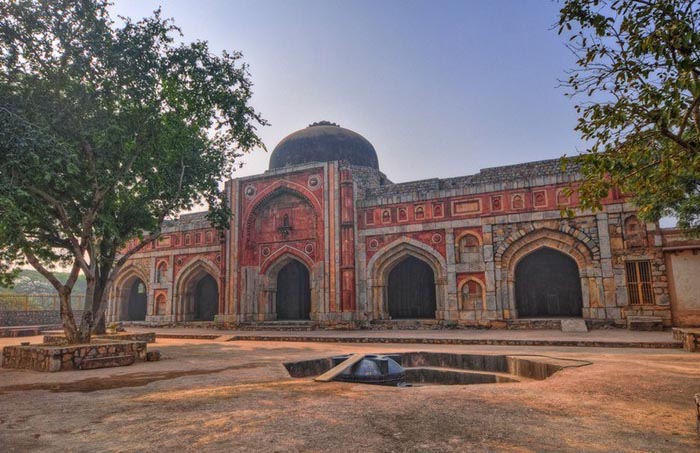Jamali Kamali Mosque and Tomb

Information on Jamali Kamali Mosque and Tomb (New Delhi) - History & Architecture
One of the well known mosques situated at Mehrauli in South Delhi is the Jamali-Kamali mosque whose construction work began during the Babur's time during the year 1528 and was completed during the Humayun rule. The mosque was developed for Jamali or the Sufi saint Shaikh Fazlullah. Situated close to the Qutab Minar, Jamali Kamali tends to possess a compound that consists of the Jamali Kamali Tomb. One gets lured by watching the Madhi masjid, Adham Khan's tomb as well as the Zafar Mahal inside the complex of Jamali-Kamali tomb. It can be mentioned that till date the monument has been maintained properly and offers a very peaceful atmosphere to the people visiting the mosque. Archeological Survey of India has basically undertaken the initiative of conserving the monument. The Mehrauli town can be well reached from all parts of Delhi with the help of well developed roads and transport system.
Religious Importance
The mosque tends to hold numerous religious importances, however in the present times the place has been getting much attention because of the haunting stories that has been attached with it. Although the mosque tends to have a glorious history attached to it, but sadly all the magnificence seems to have been forgotten.
Mythologies and Legends
At present the Jamali Kamali mosque and tomb has been located inside the compound of Archaeological village in Mehrauli area of Delhi. There are two monuments side by side, one being the mosque and the other being the tomb of two people namely Jamali and Kamali. There are legends associated with the name of Jamali, however there is no information related to Kamali in any kind of reference. Jamali has been derived from the word Jamal which means beauty. Jamali was also identified as Jalal Khan or Sheikh Jamali Kamboh who was basically a Sufi saint belonging to the time when Ibrahim Lodi attacked India, before the development of the Mughal dynasty. Although, it is said that Kamali has been associated with Jamali, his ancestor have not been identified. As per the historical data, it is said that the mosque was built during 1528-29. Jamali was cremated in this mosque after his demise in the year 1535.
Architectural Importance
The mosque tends to possess a typical Mughal appearance having a red sandstone structure and white stone demarcating the details which generally compliments the red color. One gets to see four center point arches lying over the thick piers demonstrating the architectural style of the Mughal Dynasty. The central arch has been embellished beautifully and flanked by pillars. The slot in the western wall is decorated and the central as well as the northern walls have been scripted with Quranic inscriptions. A short field tends to surround the area behind the arch where the dome generally resembles Rajput as well as Sultanate architecture. One gets lured with the conspicuous verses that have been inscribed over the wall and painted tiles that improve the beauty of the mosque. The tomb, which is a small chamber, is just at the back of the mosque. A person entering into it shall be amazed to view the rich ornamented ceiling and walls which has been covered with tiles of shades and patterns. You can get to view numerous verses over the wall that was composed by Jamali. One can enjoy the elegant lawns of Jamali Kamali that makes this place a popular picnic spot for the people residing in Delhi.